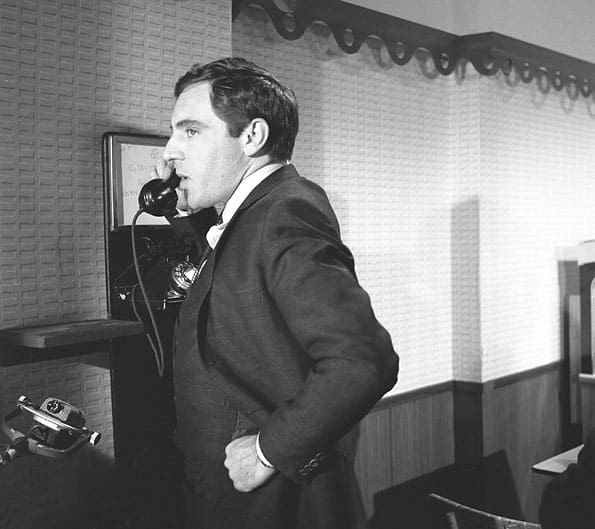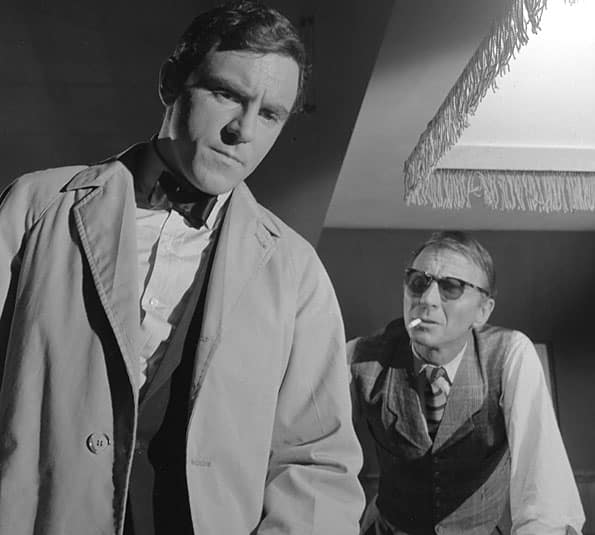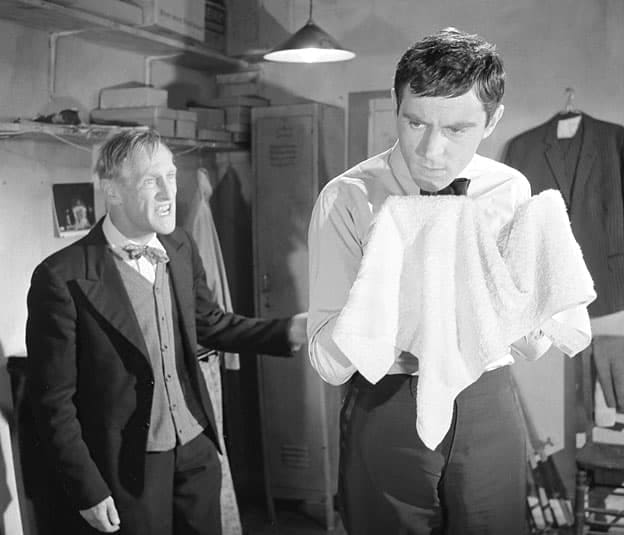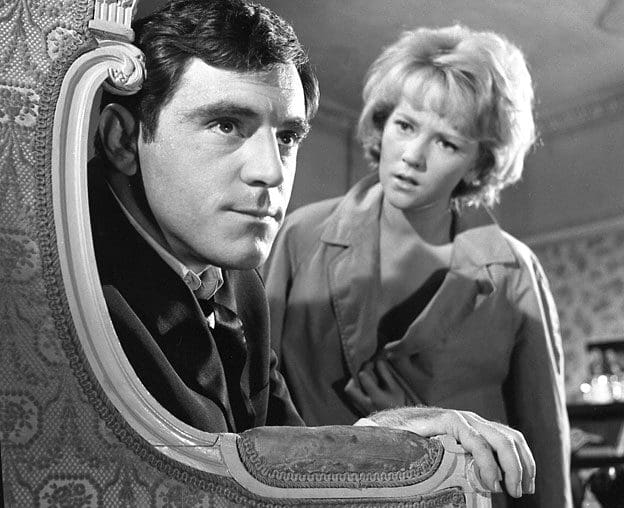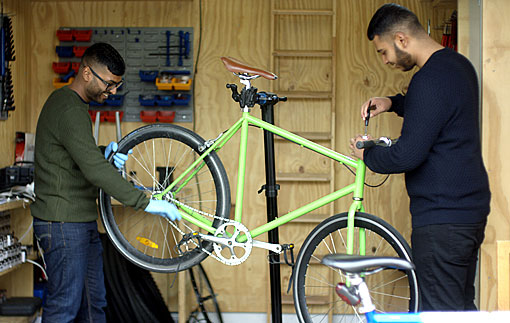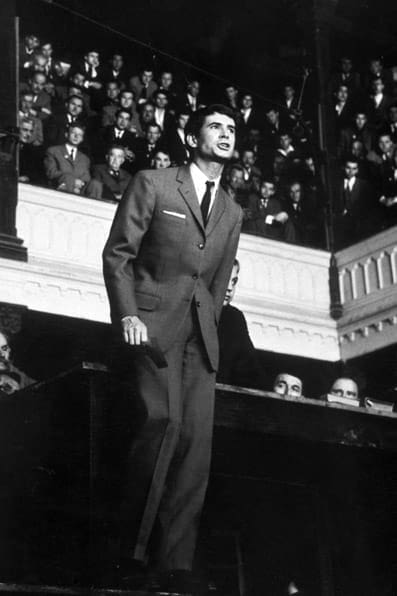The Small World of Sammy Lee – A British Classic restored – words Paul Risker
While over half a decade has passed since the 1963 theatrical release of Ken Hughes’ The Small World of Sammy Lee, it retains an air of vitality, moving along with a youthful spring in its step.
Adapted from Hughes’ BBC play, the film follows Sammy ‘Lee’ Leeman (Anthony Newley), who with five hours to spare attempts to raise the cash to pay off a debt to a gangster.
In a similar vein to other British films of the sixties, among them Robert Wise’s The Haunting, Bryan Forbes’ Séance On A Wet Afternoon and John Schlesinger’s Darling, the monochrome cinematography has preserved the charm that radiates outward from Sammy Lee’s simplest of narrative plots. The crisp and clean image is integral to the film’s aesthetic, even stimulating a regret at the tragic fate of black and white film that has been subjugated by colour cinema. It is therefore refreshing to see contemporary filmmakers sustain this weak pulse, from Mickey Keating (Darling) and Nicolas Pesce (The Eyes of My Mother) with their black and white horror films, to Romanian auteur Radu Jude (Aferim!). Comparing these contemporary works to Hughes’ film is evidence of the timeless aesthetic of the black and white image that need not define it as of another time, but rather as an aesthetic choice of the filmmaker, as it were in the sixties.
To write that Hughes’ film has the simplest of narrative plots does Sammy Lee a disservice, offering a simplification of a point that calls for more considered thought. The two narrative arcs are Sammy acquiring the cash to pay off his debt and the love interest. Here the latter is played by Patsy (Julia Foster), who turns up in Soho looking for Sammy who has promised to find her a job following their dalliance. While both offer ample opportunity for drama, the crux as always is the application of the film language to bring the film to fruition. While these narrative arcs are simple enough, what affords us the impression of Sammy Lee has a more complex film is a mix of the energies of its characters and space. Sammy’s dynamic energy as he feverishly negotiates in person and over the phone infuses the film with an energy. Meanwhile Patsy’s presence underpins this as a momentary chapter, reminding us that this is one problem, albeit a serious one. Should he resolve his current predicament then choices will have to be made that will determine either change or continuation of this lifestyle choice.
Patsy comes to represent the potential for redemption, although she is a character of a more mature and worldly nature, by way of her choices that have deviated from her family values and upbringing. As she says in one scene, “You’re a funny person, Sammy. In some ways you’re more of a man than anyone I’ve ever met. But in other ways… you’re just a child.” Opposite Sammy she is the glimmer of the maturity of femininity versus the immaturity of masculinity, yet her romanticised ideas and signs of a troublesome good nature reveals that she too can just be a child.l Her interactions with Sammy perhaps lends the film the point of view that everyone is reliant on someone else, all of us susceptible to a childish impulsiveness that haunts us into adulthood.
The cinematic language is a complex one, comprised of moving parts that could be likened to a piano. From Wolf Suschitzky’s cinematography, Ken Hughes’ script and direction to Anthony Newly and Julia Foster’s performances, alongside the supporting cast, the early impression is one that every facet of the film will nurtured by an assured cast of collaborators. Each of these moving parts are a note on the piano that must be in tune to create a perfect filmic melody. And in the case of The Small World of Sammy Lee, each note is perfectly in tune, playing with a near perfect precision. It is a film however that could be seen to take this musical metaphor in an intriguing direction as the literary merges with the film form.
Whether we believe that Sammy will be able to raise the money is irrelevant because like Sammy we are riding a wave of hope that throws us head first into his world. The film slowly builds in tension and our realisation that it has been gradually building reaches boiling point only towards the end. It is true that there may have been glimmers of this tension as Sammy raced around Soho, but it’s maturation comes in a moment that merges film with the literary, by way of sound. Unlike literature that allows us inside the mind of the characters, film is external, locking us in our role as voyeurs. Yet Hughes creates a literary moment when the cocksure Sammy begins to realise the gravity of his predicament. The sudden sound of drums almost breaks through the cinematic wall that keeps us out of Sammy’s mind. Without warning we find ourselves in the mind of the character feeling the full force of the mental and emotional storm howling within the confines of his mind. Up until this moment Sammy has masterfully deflected cause for serious concern, dividing his internal from his external self. But in one memorable moment in film history, Ken Hughes brings down a wall that reverberates beyond the screen.
Recent reviews of The Darkest Universe and Girls Lost have seen me undertake the discussion of the way the life experience of the individual fundamentally influences their experience of a film. In this instance, our spatial awareness and experience will influence our reception of The Small World of Sammy Lee. For some it will represent the memory of the Soho of yesteryear, while for others it will pull back the years to reveal Soho’s seedy and criminal past. Yet for those wholly unfamiliar with Soho past or present, the film will either appeal to the interest that is sparked by looking through the window onto a bygone era, or it will fall flat. Hughes’ film serves one important purpose that filmmaker Mike Hodges observes. “The main strength of The Small World of Sammy Lee is the use of locations. For someone as old as I am and somebody who worked and whose social life revolved around Soho, it is absolutely extraordinary to look at… It was a totally different place and if I look at it now, the extraordinary thing was that Soho was incredibly seedy, and one wonders why one liked it. But I have sentimental feelings and I want to go back.” The film is an example of the magic of cinema to keep the past alive for all generations, allowing us to come as close as possible to seeing and feeling the past, whether as an act of rediscovery or as an introduction. This is one of the many gifts of cinema and The Small World of Sammy Lee is Hughes’ gift to us all.
The Small World of Sammy Lee is available on EST, DVD and Blu-Ray from Studio Canal as part of their Vintage Classics Collection.
The Small World of Sammy Lee – A British Classic restored – words Paul Risker


